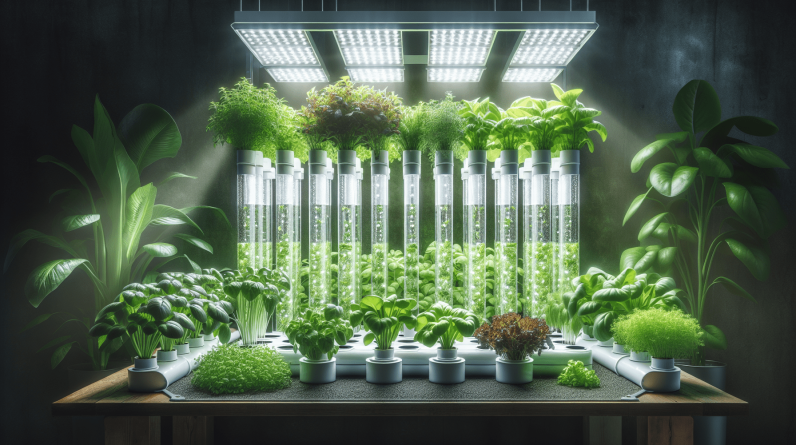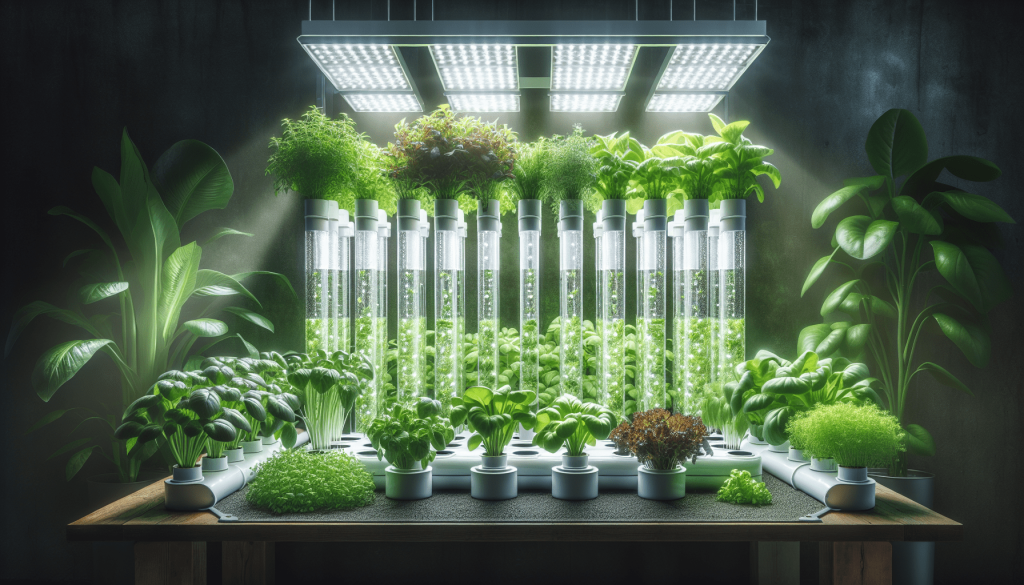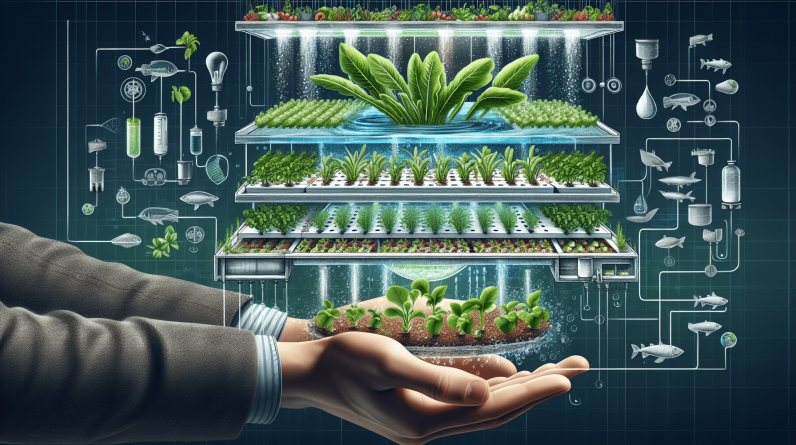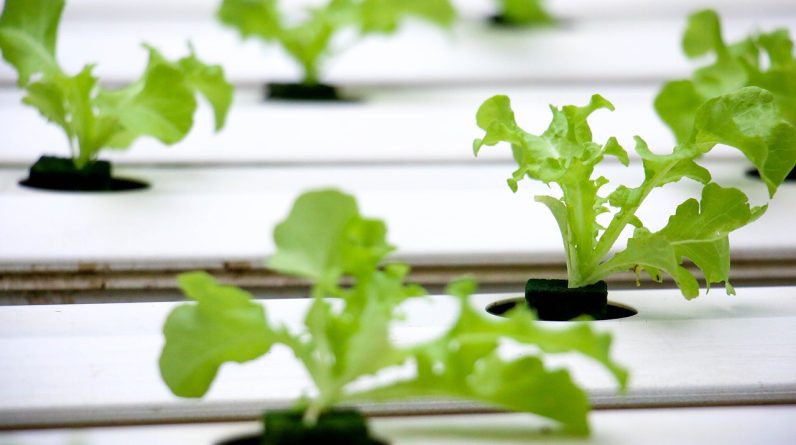
Have you ever considered starting your hydroponic growing system but not sure where to begin? This beginner’s guide to hydroponic growing systems will provide you with all the information you need to get started on this exciting gardening journey. From understanding the basics of hydroponics to setting up your first system, this guide will walk you through each step, making the process easy and enjoyable. Let’s dive into the world of hydroponic gardening and unlock the secrets to growing fresh, healthy crops right in your own home.
Understanding Hydroponic Growing Systems
Hydroponic growing systems work by delivering essential nutrients directly to the plant roots without the need for soil. This innovative method allows plants to grow in a controlled environment, maximizing growth and productivity. By eliminating soil from the equation, hydroponics conserves water, reduces the risk of pests and diseases, and enables efficient crop production year-round. Understanding the fundamentals of hydroponic systems is crucial to successfully implementing this gardening technique and reaping the benefits it offers.
Key Components of Hydroponic Growing Systems
In a hydroponic system, several key components work together to create an optimal growing environment for plants. These components include:
- Reservoir: Holds the nutrient solution that feeds the plants.
- Growing Medium: Provides support for the plants’ roots.
- Nutrient Solution: Supplies essential nutrients for plant growth.
- Pump: Circulates the nutrient solution through the system.
- Light Source: Provides artificial light for photosynthesis.
By understanding how these components interact and contribute to plant growth, you can effectively set up and manage your hydroponic growing system.

Types of Hydroponic Systems
There are several types of hydroponic systems, each offering unique advantages based on the specific needs of plants and growers. Understanding the different types of hydroponic systems will help you choose the one that best suits your gardening goals and space availability.
1. Deep Water Culture (DWC)
Deep Water Culture systems suspend plant roots in a nutrient solution, allowing them to absorb oxygen and nutrients directly. This simple and cost-effective system is ideal for beginners due to its ease of setup and maintenance.
2. Nutrient Film Technique (NFT)
Nutrient Film Technique systems continuously flow a thin film of nutrient solution over plant roots, promoting efficient nutrient absorption. NFT systems are space-saving and perfect for growing leafy greens and herbs.
3. Ebb and Flow (Flood and Drain)
Ebb and Flow systems flood plant containers with nutrient solution at regular intervals, then drain the excess, providing oxygen to the roots. This versatile system is suitable for a wide range of plants and growing conditions.
4. Drip System
Drip systems deliver a precise amount of nutrient solution to plant roots through drip emitters, ensuring consistent hydration and nutrition. This system is highly customizable and allows for efficient water and nutrient management.
5. Aeroponics
Aeroponic systems mist plant roots with a nutrient solution, promoting fast growth and optimal nutrient uptake. This advanced system is perfect for growing a variety of crops, including fruits and vegetables.
By exploring the different types of hydroponic systems and their unique features, you can select the one that aligns with your gardening preferences and needs.
Setting Up Your Hydroponic System
Now that you have a better understanding of hydroponic growing systems and the various types available, it’s time to set up your own system. Follow these step-by-step instructions to create a successful hydroponic setup in your home or garden.
1. Choose a Growing Space
Select a suitable area for your hydroponic system, ensuring it receives adequate light and ventilation. Indoor spaces with access to natural or artificial light are ideal for year-round cultivation.
2. Select a Hydroponic System
Based on your space availability and gardening goals, choose the type of hydroponic system that best fits your needs. Consider factors such as plant varieties, skill level, and budget when making your decision.
3. Install the System Components
Assemble the reservoir, growing medium, nutrient solution, pump, and light source according to the instructions provided with your chosen hydroponic system. Ensure all components are securely in place before proceeding.
4. Prepare Plant Containers
Fill plant containers with the selected growing medium and transplant seedlings or cuttings into the containers. Position the containers in the system to allow for proper nutrient and light exposure.
5. Monitor and Maintain the System
Regularly check the nutrient levels, pH balance, and water temperature of the system to ensure optimal plant growth. Adjust nutrient solutions and lighting schedules as needed to meet the plants’ requirements.
6. Harvest and Enjoy Your Crops
Once your plants have reached maturity, harvest the fresh produce and enjoy the fruits of your labor. Hydroponic systems allow for continuous harvesting, providing a sustainable source of homegrown crops.
By following these steps and guidelines, you can set up a productive and efficient hydroponic system that will yield healthy and abundant crops throughout the year.

Tips for Successful Hydroponic Gardening
To ensure a successful hydroponic gardening experience, consider implementing the following tips and best practices:
1. Maintain Proper Nutrient Levels
Regularly monitor and adjust the nutrient solution to provide plants with the essential nutrients they need for healthy growth. Use a reliable pH meter to keep the nutrient solution within the optimal range for plant absorption.
2. Provide Sufficient Lighting
Choose a high-quality grow light that mimics the full spectrum of sunlight and adjust the light schedule to meet the plants’ light requirements. Proper lighting is essential for photosynthesis and overall plant development.
3. Prevent Pest and Disease Issues
Inspect plants regularly for signs of pests or diseases and take immediate action to control infestations. Implement preventive measures such as using organic pesticides or beneficial insects to keep plants healthy.
4. Prune and Maintain Plants
Regularly prune plants to promote airflow and prevent overcrowding, which can lead to disease. Remove dead or damaged plant parts to encourage new growth and maintain overall plant health.
5. Experiment and Learn
Don’t be afraid to experiment with different plant varieties, growing techniques, and nutrient solutions to expand your hydroponic gardening knowledge. Keep track of your observations and results to fine-tune your growing approach over time.
By incorporating these tips into your hydroponic gardening routine, you can optimize plant growth, minimize issues, and enjoy a bountiful harvest of fresh, nutritious crops.

Conclusion
Hydroponic growing systems offer a sustainable, efficient, and innovative approach to gardening, allowing you to grow fresh, healthy crops year-round. By understanding the fundamentals of hydroponics, exploring different system types, and following step-by-step setup instructions, you can create a successful hydroponic garden in your own home. Remember to monitor and adjust your system regularly, implement best practices for plant care, and enjoy the rewards of homegrown produce. With dedication and a bit of experimentation, you can become a confident hydroponic gardener and reap the benefits of this rewarding gardening method. Start your hydroponic journey today and watch your plants thrive in this soil-free growing environment!











